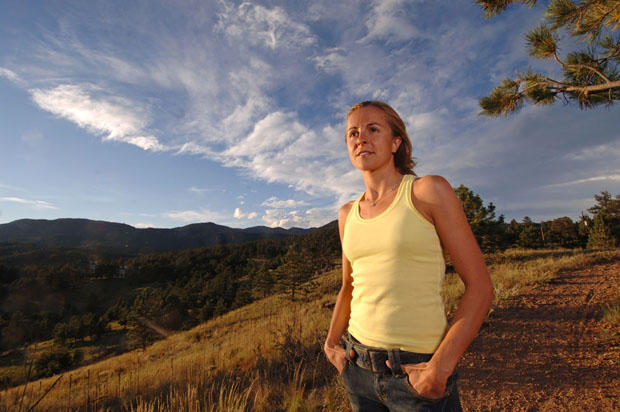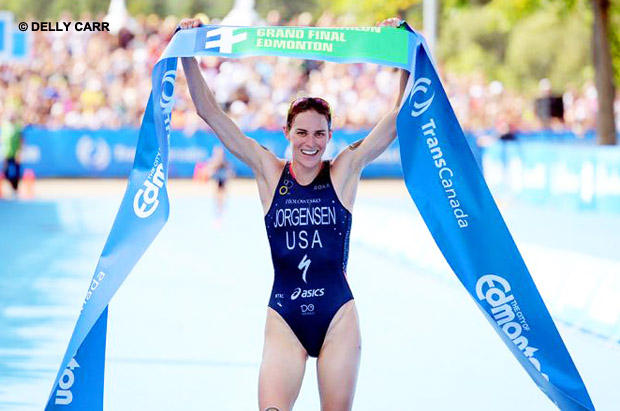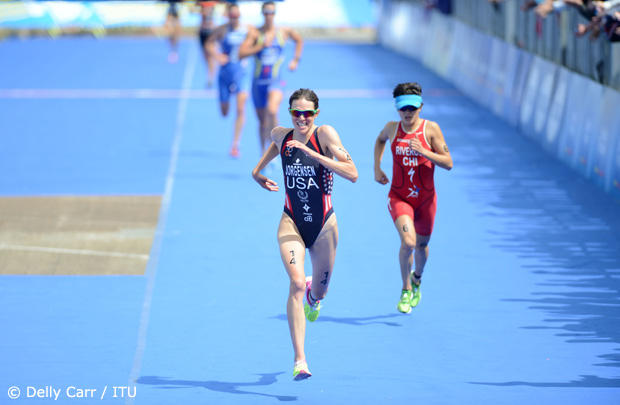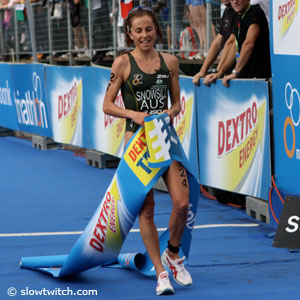Emma vs. Gwen – so far it’s a tie
While Emma Snowsill was a complete triathlete, her ace in the hole was the run – and her 10k splits in big races compare well with the current World Triathlon Series 2014 champion and dominant runner Gwen Jorgensen.
Comparing triathletes from different eras, racing on different courses, in different conditions, against different opposition is far from an exact science. Olympic courses in particular and World Championship and Grand Final courses to a lesser degree (notable exceptions being the 1996 and 2000 ITU World Championship women’s run courses which were extremely short) tend to be more accurately measured. So those times are worthy of notice although not foolproof measures of abilities. With that in mind, the margins of superiority over their closest competitors on the day is another very good indicator of their dominance in their eras – and give another idea of the timeless excellence each has achieved.
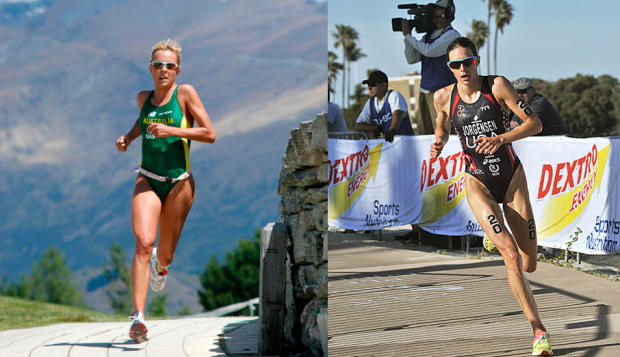
This article is not intended to create a race of two eras nor to determine which athlete is better. But this is intended to remind current day fans that Gwen Jorgensen had a worthy predecessor who dominated her sport for a longer time – and provides the American with a nice target going forward.
Snowsill’s gold medal-winning Olympic run split at Beijing was 33:17, better than Kate Allen’s shockingly fast 33:47 at Athens in 2004 and Nicola Spirig’s 33:41 at the 2013 Games in London – and 1:04 better than 2008 Olympic silver medalist Vanessa Fernandes. Snowsill’s ITU World Championship winning run splits began with a 36:01 at the 2003 race in Queenstown – on a slow course she was 1:31 better than runner-up Laura Bennett. In 95-degree heat at Gamagori in 2005, her 34:57 10k split was 1:43 better than runner-up Annabel Luxford. In 2006, Snowsill’s winning 33:35 split was 49 seconds better than major rival Vanessa Fernandes. And at the 2007 ITU World Championship in Hamburg (on a course estimated to be 100 meters short), Snowsill’s race-best 32:54 split could not catch Vanessa Fernandes’ lead off the bike but Snowsill outran the gold medalist. At the 2010 Grand Final in Budapest, Snowy killed her opposition with a 33:08 run split that was 1:57 better than runner-up Emma Moffatt and even more time ahead of 3rd place finisher Nicola Spirig.
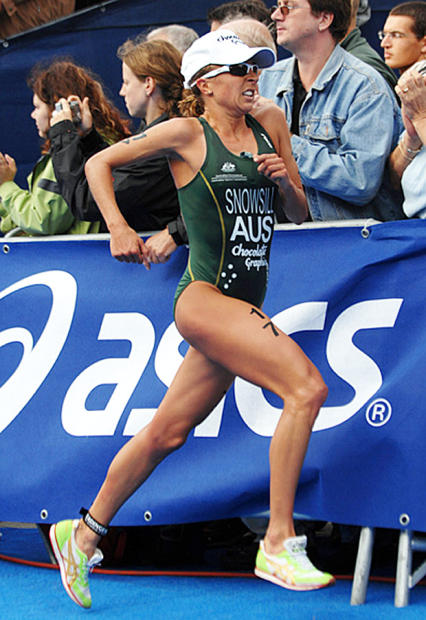
Jorgensen’s run splits have also decimated her opposition. At the 2011 WTS race at London, Jorgensen ‘s race-best 33:43 run to second place was 10 seconds better than Snowsill’s run to 5th. At the 2012 Grand Final at Auckland, Jorgensen’s race-best 34:10 was 1:03 better than runner-up Anne Haug. On an obviously shorter-than-10k-run at Stockholm in 2013, Jorgensen’s 31:41 was 45 seconds better than runner-up and WTS champion-to-be Non Stanford. In 2014, Jorgensen’s 32:46 run to 3rd place at WTS Cape Town was 1:54 better than race winner Jodie Stimpson. At WTS Yokohama, her race-best 33:43 split was 39 seconds better than runner-up Ai Ueda. At a hot and muggy Chicago, her race-best 34:14 10k run was 1:24 better than runner-up Helen Jenkins. And at the ITU Grand Final at Edmonton, her race best 33:24 run split was 1:23 better than Grand Final runner-up Andrea Hewitt.
Snowsill, who competed against a still on-the-rise Jorgensen at the ITU World Championship Series Olympic preview at London in 2011, has high praise for her successor as the dominant runner and clutch big race performer on the ITU circuit.
Snowsill says Jorgensen is redefining the sport: “I think Gwen is leading a new era of the sport. All credit to her and [her coach] Jamie Turner for finding the balance to cope with travel, to compete well in the races in the very competitive WTS series.”
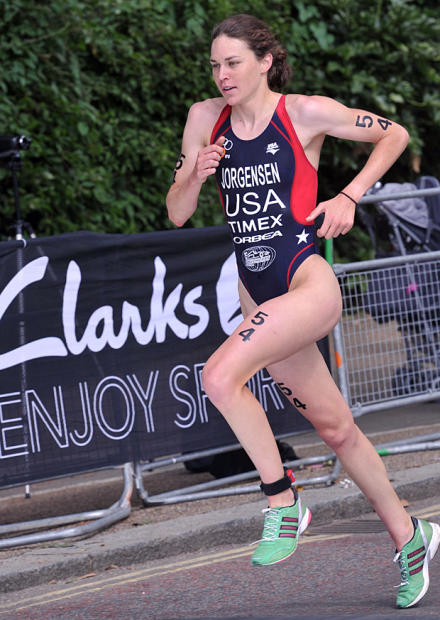
Snowsill is precise in comparing the contrasting styles of the 5-feet 10-inch tall Jorgensen and her own 5-feet 3-inch frame: “Gwen looks like a beautiful runner and she runs like one,” says Snowsill. “Whereas I never considered myself a runner. I considered myself somebody who could put a run together at the end of a triathlon. I honestly don't know how I would run if you put me in a straight 10k race. I always ran after an hour and half warm-up of swimming and biking. I was taught to run efficiently with a fast turnover. Gwen runs like a great track and cross country runner – with a long stride.”
Gwen Jorgensen has studied Emma Snowsill’s running form as well. “When I look back and watch her run, I notice her near perfect mechanics,” says Jorgensen. “She has a high cadence/turnover. It's something I'd like to mimic, as my cadence is slower. Watching her in Beijing 2008 is the perfect example of how dominant she was in triathlon.”
Snowsill says that she ended up an excellent runner as a part of a process designed to make her into an all-around triathlete. “I was educated by [coach] Brett [Sutton] to run with a high cadence and also he certainly didn't train us to be just runners,” said Snowsill. “He knew there was a fine balance between a great runner and a great triathlete. Some great runners are never able to swim in the front pack. Someone small like me needed a lot of strength in the water.”
Jorgensen says she was inspired to become a better all-around triathlete after talking with Snowsill this year.
“Emma Snowsill talked to me about how she wasn't naturally gifted in running,” said Jorgensen. “It was something she had to work really hard at. I was shocked when she told me this as her running looked so easy and natural. This inspires me for my swim and bike. I hope that I too can become better with hard work and focus like Emma did with her run.”
Jorgensen is happily surprised and humbled by Snowsill’s compliments – and quickly returns them. “To be compared to Snowy is an honor,” she said. “I had the pleasure of spending some time with her in Hamburg this year. It was great to get to know her better and learn about how she used to train and mentally prepare. Emma Snowsill is the Gold Standard in our sport. I hope I get to spend more time with her in the future – I could learn a lot from her.”
While Snowy’s elite career is written, Jorgensen is just beginning. And in all likelihood, Snowsill will be there to interview the American who is making new history following in her Australian predecessor’s swift footsteps at many big races.



